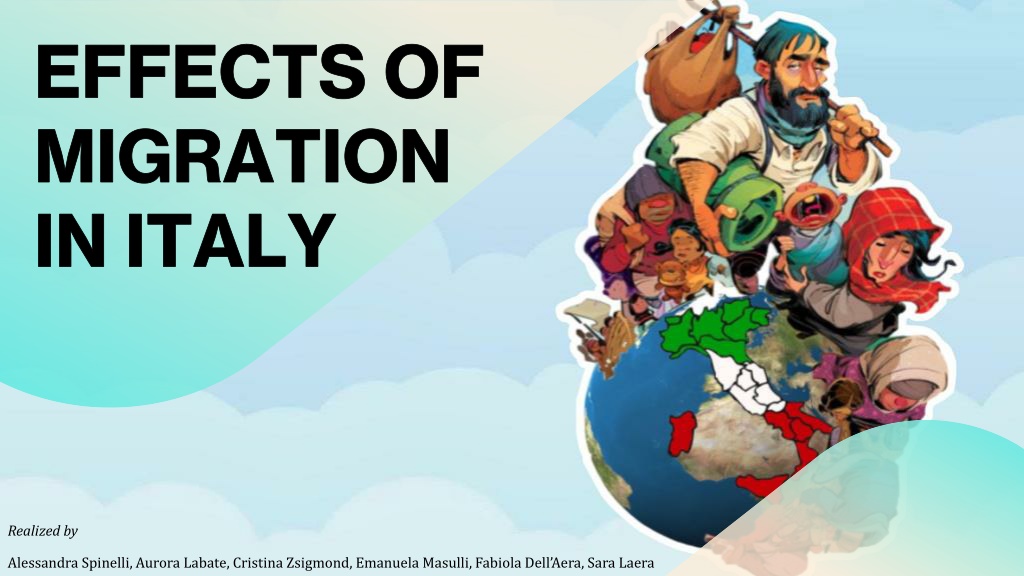Effects of Migration in Italy: Causes and Consequences
Italy experienced a shift in migratory flows in the late 1980s, leading to economic and social transformations. The causes of migration include conflicts, economic disparities, and climate changes. Departure countries face impacts such as brain drain and demographic shifts, while arrival countries deal with workforce adaptation and social tensions. These effects shape the economic and social landscapes of both departure and arrival nations.
Download Presentation

Please find below an Image/Link to download the presentation.
The content on the website is provided AS IS for your information and personal use only. It may not be sold, licensed, or shared on other websites without obtaining consent from the author. Download presentation by click this link. If you encounter any issues during the download, it is possible that the publisher has removed the file from their server.
E N D
Presentation Transcript
EFFECTS OF MIGRATION IN ITALY Realized by Alessandra Spinelli, Aurora Labate, Cristina Zsigmond, Emanuela Masulli, Fabiola Dell Aera, Sara Laera
Table of contents 1.MIGRATORY FLOWS IN ITALY 2.THE CAUSES OF MIGRATORY FLOWS 3.EFFECTS ON COUNTRY OF DEPARTURE 4.EFFECTS ON COUNTRY OF ARRIVAL
MIGRATORY FLOWS IN ITALY Italy, unlike other European countries that have an older migration history, slowly became a destination for migratory flows, towards the end of the 1980s, starting a profound change within Italy s economic and social conditions.
THE CAUSES OF MIGRATORY FLOWS conflicts between states or conflicts within a state; serious economic imbalances between different geographical areas; the presence of anti-democratic systems that are a source of persecution and contempt for human rights; climate or territorial changes, natural disasters; the push of the human being to ensure acceptable survival for himself and their loved ones.
EFFECTS ON COUNTRY OF DEPARTURE OPPORTUNITIES THREATS a return of hard currency from abroad (remittances), which is usually used to purchase consumer goods; the professional categories that emerge are often those that the country would need most (brain-drain: the so- called brain drain), conditioning its development. the upheaval or disappearance of entire production sectors. ECONOMY can reduce a population surplus, bringing the demographic pyramid into balance (in the ratio between sexes and age groups) alteration in patterns of consumption and behaviour and in relationship life; decrease in the youth classes; the birth rate decreases; due to breaking up of families. SOCIETY
EFFECTS ON COUNTRY OF ARRIVAL OPPORTUNITIES THREATS the immigrant workforce adapts to the needs of the local labour market, entering above all at medium-low levels it is a cost: social, political and economic; creates situations of overheating in the housing, health, transport sectors; the immigrant workforce is competitive with the local one; the immigrant workforce affects the trade balance of international payments. ECONOMY the youth age groups are greater; increases the fertility/birth rate Contributes to population growth. Development of social prejudices and racist attitudes which can lead to episodes of intolerance and violence SOCIETY
THANKS FOR WATCHING























